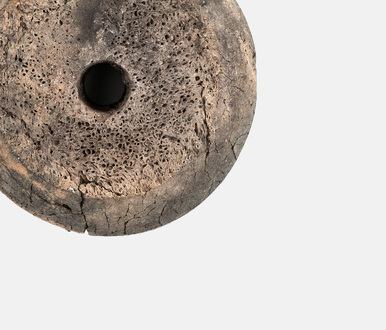The Stepnoye VII burial ground is located on the left bank of the Uy River 300–400 meters east of the village fence of Stepnoye in Plastovsky district, Chelyabinsk region. In 2003, a team of the archaeological expedition of the Chelyabinsk State University and the Arkaim Museum-Reserve led by Elena Kupriyanova examined it. At the bottom of pit 17, in the center of the burial chamber, there was a burial of three people lying with their heads to the southwest. Two skeletons were lying in the “embrace pose” (the age of the buried persons was 15–17 years; it was possible to determine the gender — female — of only one of them), the third (a woman of 45–55 years of age) was a little farther away, facing the couple.
A massive bronze ax with traces of a wooden shaft was found against the wall of the chamber; a bronze adz with traces of winding was leaned on top of the blade. The objects were located in the area of the robber’s trapdoor, just above the floor of the chamber, and were probably dropped by the robbers. There were also several other small objects lying not in situ (on the site), 10–20 centimeters above the floor of the chamber and also left by the robbers: a stone arrowhead, a string of bronze beads from the destroyed part of the plait ornament and bronze “tweezers”.
The bronze plate flat ax has an elongated trapezoidal shape, rectangular in cross-section. It is a striking and chiseling tool, combining the functions of a chisel and a hammer at the same time. At the working end of the blade there are small flanges, the blade is rounded. The length of the tool is 10.9 centimeters, the width of the blade is 3.2 centimeters, the width of the end side is 2 centimeters, and the thickness is 5 millimeters. The blade has scratches and traces of sharpening. On one side of the item, near the end edge, there are traces of winding, perpendicular to the long sides of the tool, six coils are recorded. The traces are caused by some organic material (probably a leather strap), by means of which the item was attached to the shaft. The item is covered with dark brown patina. The butt has a rounded pothole.
The grave is rich in ceramics and other funerary equipment. In addition to the ax, there were eight vessels, a plait and pendant ornaments, two bronze axes, bronze bracelets, amulets made of fox fangs and incisors, bronze rings and beads.



